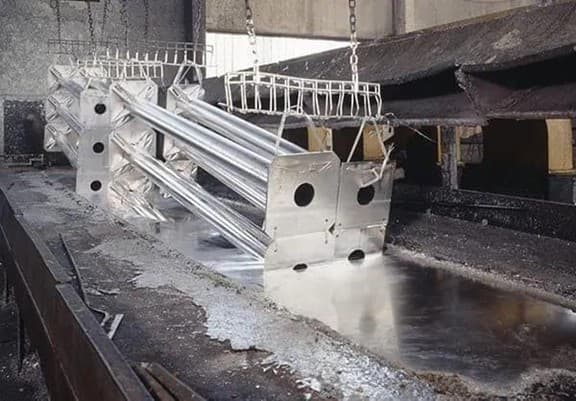
By David Laws, partner at Matthews & Goodman
Now we have a vaccine will it be business as usual, or has the work paradigm changed forever? Probably.
The COVID lockdown accelerated structural changes that were already in process – such as the growth of e-tailing at the expense of the high street and working from home.
Today, the workplace is a very different environment from what it was even a few months ago. Physical distancing in the workplace is probably here to stay and work is no longer a destination but an activity – one which can be done in an office, at home, on the move, in a coffee bar, anywhere. In essence, work is no longer somewhere you go, but something that you do.
This has led to a profound review of what our expectations are of our offices. To accommodate physical distancing in the workplace, most organisations have dispensed with personal desks, as desk sharing is the only way to accommodate this new requirement. This has given rise to the ‘blended workplace’ (i.e. people will now work in multiple locations – in the office, at home and meeting clients, partners and suppliers in coffee shops, hotel lobbies, etc.
Creating a Blended Workplace

So, where do we begin? Will you be expected to recall everyone (government allowing) and resume a 9-to-5/pre-COVID workstyle or will you adopt a blended workplace strategy? If the latter, how will you use the space? Some suggestions of optimising space include:
- Reducing the number of desks available and those which remain will be shared and bookable, prior to coming into the office
- Introducing more collaborative workspaces
- Replacing prestigious boardrooms with smaller meeting rooms
- Introducing ‘quiet zones’ for contemplative working
Perhaps your physical-distancing-at-work strategy will result in the realisation that your current space is too small for you therefore a move is on the books. Or you might augment the current space with the acquisition of additional space in a serviced office. This will allow you to function within the confines of the lease terms until such time as the lease on the current and augmented spaces can be aligned and a new lease for a bigger office negotiated.
When deciding on a new office space, will you opt for a smaller head office for brand, recruitment and prestige purposes but introduce local ‘hubs’ in near-home locations, allowing employees to escape their home office and/or meet colleagues, clients, partners and suppliers locally. Minimising the commute will make financial and logistic sense for employees and help the company to meet its ‘green’ ambitions.
Some of these points can be achieved in your current workplace with a little bit of help and advice from a fit-out specialist. However, if a move is necessary and feasible (current lease allowing) then you will be able to start with a clean sheet of paper and a map to ensure you optimise the benefits of any move.
Making the Most of Your Current Workspace
Ultimately, if the existing fabric and location of the current workplace remain fit for purpose for the next three to five years, does your forthcoming lease event provide the opportunity to engage with your landlord to re-align the purpose of the office without having to move?
Your landlord may help with financing, in return for a new lease. Afterall, no landlord wants to lose its tenants in the current climate.
Considerations Regarding Moving Offices
Office Too Small?
If your current workspace isn’t fit for purpose, what are the key determinants that help you to make a decision about moving offices? If moving office is the right option for you, here’s what should be on top of your clean sheet of paper:
Purpose
- What will be the future purpose of the workplace?
- What function(s) do you expect to be undertaken?
- Will the environment be more task specific and desk based or more collaborative for collective ideas sharing around project tables?
Location
- What is the best aggregate location for all your employees (in ‘commute time’ terms)?
- What’s best for your brand (think media companies locating to ‘media cities’)?
- Is it close to clients, partners, suppliers?
- How good is accessibility to public transport and parking facilities?
Size
- How do you want to use the space?
- What’s the optimum size for your requirements?
Futureproofing
Interrogate your business and financial plans, ensuring that the new space can grow or shrink to accommodate the strategic ambitions outlined in your plans.
Cost management
Be honest about all costs, such as removal, communications, insurance, fit-out, etc., not just rent and rates.
Timing
Things take longer than you think such as:
- the legal process;
- assessing, selecting and installing broadband/communications systems;
- health and safety audits;
- pandemic proofing assessments; and
- heating and ventilation system audits.
A word of advice: when looking for a new office, it pays to consult a property professional who will help you define your brief, determine the optimum location and property, use their local knowledge and access both on and off-market opportunities to save you time and shoe leather.
Ultimately, someone who knows and understands the local market has an encyclopaedic
knowledge of rent comparables and will negotiate on your behalf, not only securing the
best deal for you, but also ensuring you can focus on your day job.
Office Too Big?
So, after an occupational and financial review of your circumstances, you realise your current office exceeds your requirements, so what are your options?
The most obvious one is to move, if your lease allows it. This would be the optimum result if the lease term is almost at an end or you are approaching a lease break that will allow you to exit the contract and the space. If not, you might want to consider sub-letting some or all of the space; however, this requires a detailed review of your lease to ensure you can do this.
If your lease does allow you to sublet and you have secured your landlord’s permission to
do so, there are three key things you should bear in mind:
- How much will you charge for the space? Portal trawling could help you decide on an indicative price, but do seek the advice of a property professional who has access to comparable data and good local knowledge of what they refer to as ‘grey space’.
- What are you including in the rental charge? For instance, access rights, broadband usage and how the utility bills will be paid. Will you share the cost and, if so, how will you define that ‘share’, or will it be included in the rental fee?
- Ensure you have a subletting contractual agreement in place, before you even think about giving your new tenant a key to the office – again, seek the advice of a professional before entering into any agreement.
Should you decide to end the lease and move out, a landlord may serve you with a ‘claim for dilapidations’ setting out any repairs and or remedial works that could cost tens of thousands of pounds, as well as claim months of rent during the ‘repair period’. This is why it is critical to take professional advice months before the end of the lease.
A bear trap to be wary of in most leases is FRI (full repairing and insuring) leases. FRI leases require the tenant to undertake a full repair of the property and decorate it before they hand it back to the landlord. The property may have been in very poor repair when the tenant moved in but, if it is an FRI lease, the tenant will have to render it in A1 condition before moving out.
If the tenant moves out without doing this, the landlord will appoint a surveyor to prepare a schedule of dilapidations showing all the works needed. However, many tenants will have entered into an agreement at the beginning of the lease, which ensures that they will not have to hand the property back in a better condition than it was when they took it on. This is known as a schedule of condition, which is attached to the lease and usually consists of photographs of the property when they moved in, as well as a detailed description of any faults. This document ensures that the tenant will not have to repair inherited faults and, if the property was in poor condition at the start of the tenancy, they can hand it back in poor condition.
These are interesting times and the return to the office will be gradual; however, one of the things we can be sure of is that the genie is out of the bottle. Those surreptitious Friday WFH sessions have now been institutionalised and many companies will expect their employees to work from home, thus reducing their occupational costs.
Pandemic planning is now firmly on the agenda of all organisations – irrespective of size,
sector, or geography – and has changed how we think of work and how we think of our workplace. The office is dead, long live the office.


